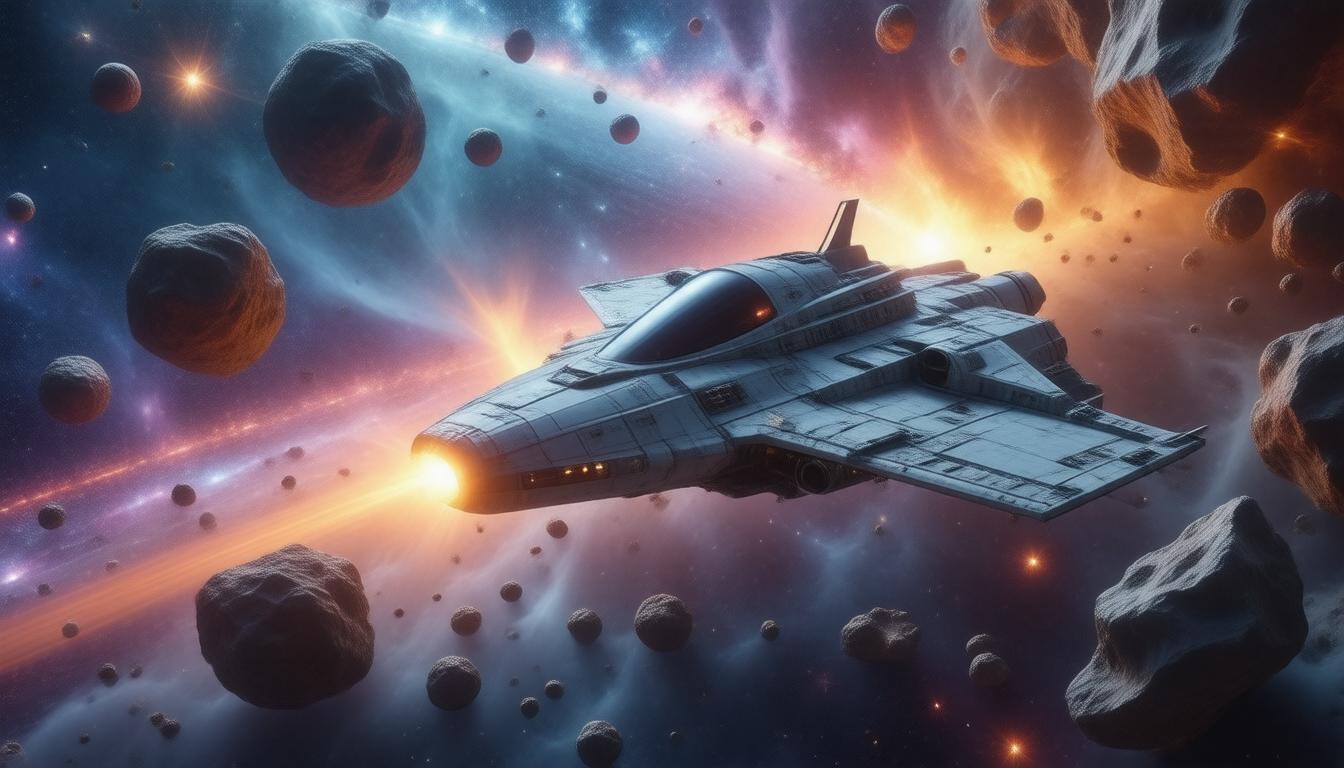Asteroids, the remnants of the early solar system, are fascinating celestial bodies that offer a window into our cosmic history. These rocky formations, abundant in the asteroid belt and beyond, have captivated scientists and space enthusiasts alike with their intriguing compositions and unpredictable paths. In this article, we will delve into the mysteries surrounding asteroids, exploring their composition and structure, examining famous missions that have expanded our understanding of these celestial neighbors, assessing the potential threats asteroids pose to Earth, and looking forward at the future of asteroid exploration, which presents both unprecedented opportunities and significant challenges. Join us on this journey through the cosmos as we uncover the secrets held within our asteroid friends.
Topics
- Asteroids are composed of various materials, providing insights into the early solar system.
- Notable missions like NEAR Shoemaker and Hayabusa have advanced our understanding of asteroids.
- Asteroids pose significant threats to Earth, necessitating effective monitoring and mitigation measures.
- Future exploration of asteroids holds potential for resource extraction and scientific discoveries.
- Challenges in asteroid exploration include funding, technology, and international collaboration.
Understanding Asteroids: Composition and Structure
Asteroids are fascinating celestial bodies that provide valuable insights into the early solar system’s formation and evolution. Primarily composed of rock and metal, asteroids vary significantly in size, composition, and structure, which can range from solid monolithic forms to porous, rubble-pile configurations. Most of these minor planets exist in the asteroid belt between Mars and Jupiter, where their irregular shapes and sizes give hints about their composition. The core of many asteroids often contains metallic elements such as nickel and iron, while their surfaces might be rich in silicate minerals. Understanding these structures is crucial, as they not only help astronomers decode the history of our solar system but also play a vital role in planetary defense and resource potential for future space exploration.
Famous Asteroid Missions: Pioneering Space Exploration
Asteroid missions have become a focal point in pioneering space exploration, captivating the attention of scientists and space enthusiasts alike. These ambitious projects aim to unlock the secrets of our solar system, providing insights into the formation of planets and the origins of water and organic matter on Earth. One of the most notable missions is NASA’s OSIRIS-REx, launched in 2016, which successfully retrieved samples from the near-Earth asteroid Bennu in
2020. This significant endeavor not only enhances our understanding of asteroids but also poses essential questions about potential asteroid threats to Earth and the viability of mining these celestial bodies for resources. Another prominent mission is Japan’s Hayabusa2, which returned samples from the asteroid Ryugu in 2020, marking another giant leap in our knowledge of space geology. As we continue to investigate asteroids, these missions not only shed light on our cosmic neighborhood but also inspire future generations of space explorers.
‘Somewhere, something incredible is waiting to be known.’ – Carl Sagan
The Threat of Asteroids: Risks and Mitigation Strategies
The threat of asteroids has become a topic of increasing concern among scientists and space agencies worldwide. With millions of asteroids orbiting our Sun, the potential risks they pose to Earth are significant; even a small asteroid could cause devastating damage if it were to collide with our planet. To effectively address these risks, ongoing research and monitoring are crucial. Organizations like NASA’s Near-Earth Object Program and other global initiatives work tirelessly to track the trajectories of asteroids and assess their potential impact. Furthermore, mitigation strategies are being developed, including deflection techniques that involve redirecting an asteroid’s path, or preparedness plans to develop response protocols in the event of an impending threat. Staying informed about the dynamics of asteroids and their potential risks not only enhances public awareness but also underscores the importance of international cooperation in safeguarding our planet from these cosmic hazards.
The Future of Asteroid Exploration: Opportunities and Challenges
As humanity stands on the brink of a new era in space exploration, the future of asteroid exploration promises both remarkable opportunities and significant challenges. Asteroids, often dubbed as the ‘leftover building blocks’ of our solar system, hold invaluable resources such as metals and water that could be essential for long-term space missions and life beyond Earth. For instance, the potential mining of platinum group metals from asteroids could revolutionize industries on Earth. However, the path to harnessing these opportunities is fraught with challenges, including the harsh environment of space, the high cost of missions, and the technological hurdles involved in traveling to and landing on these celestial bodies. As various space agencies and private companies prepare to launch missions targeting asteroids, careful consideration of both the scientific objectives and the ethical implications of asteroid mining will be crucial. Overall, embracing these challenges will be key to unlocking the mysteries of asteroids and transforming them from mere space rocks into viable resources for future generations.
Improve your professional profile AND do your part to contribute and advance human civilization by becoming a member today.



